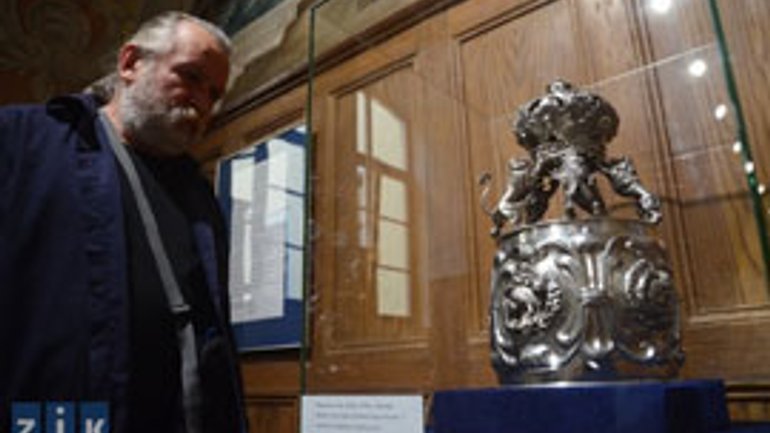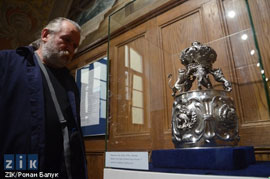Restored Jewish Silver Ritual Objects on Display in Lviv

 On August 28, restored Jewish ritual silver, which served as an essential attributes during the celebration of holidays, was presented at the Lviv Museum of the History of Religion. Visitors are able to see the panels and crown on the Torah, candlesticks, candelabras, bowls, and spice boxes, thanks to six years of painstaking work by the artist and restorer Oleksandr Pavlyuk, IA ZIK reported.
On August 28, restored Jewish ritual silver, which served as an essential attributes during the celebration of holidays, was presented at the Lviv Museum of the History of Religion. Visitors are able to see the panels and crown on the Torah, candlesticks, candelabras, bowls, and spice boxes, thanks to six years of painstaking work by the artist and restorer Oleksandr Pavlyuk, IA ZIK reported.
The exhibition, which presents the Jewish silver, is called “Before and After.” This name was chosen because you can see pictures of how most of the items looked before Pavlyuk started working with them. Visitors will have the opportunity to see how a few centuries destroyed the objects and assess the work of the restorer.
“It was very complicated and problematic work. The process of restoring itself is very complex. For example, a silver crown for the Torah took almost two years to make. There are some more complicated, in terms of restoration, items. It was difficult to work with them, but very interesting,” said Pavlyuk.
He said that credit for the restoration should not only go to him, but also to the entire team of historians and museum staff.
“Indeed, the work passed through my hands, but if historians and museum workers did not cooperate with restorers, we would have nothing. It is the merit of the whole staff of our museum,” said Pavlyuk.
The exhibition was opened in a restored hall, where once was a refectory.
“Symbolically, the Jewish ritual items are next to Christian murals. For centuries these artifacts existed side by side: churches stood next to synagogues, to Roman Catholic churches. People lived peacefully, learned much from each other, worked together, and created cultural values,” said the director of the museum, Orest Malych.









